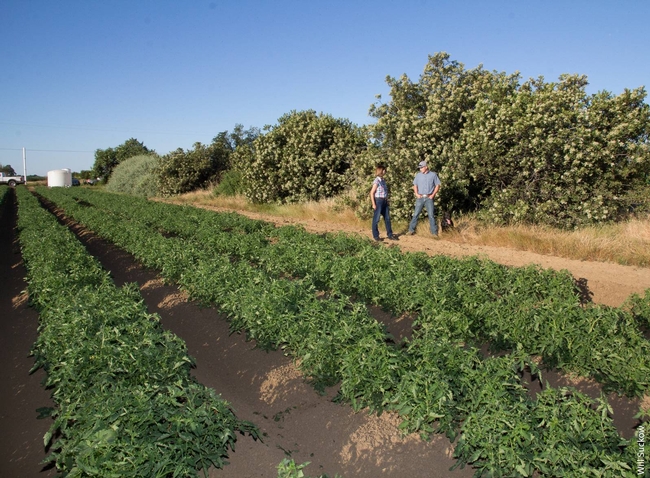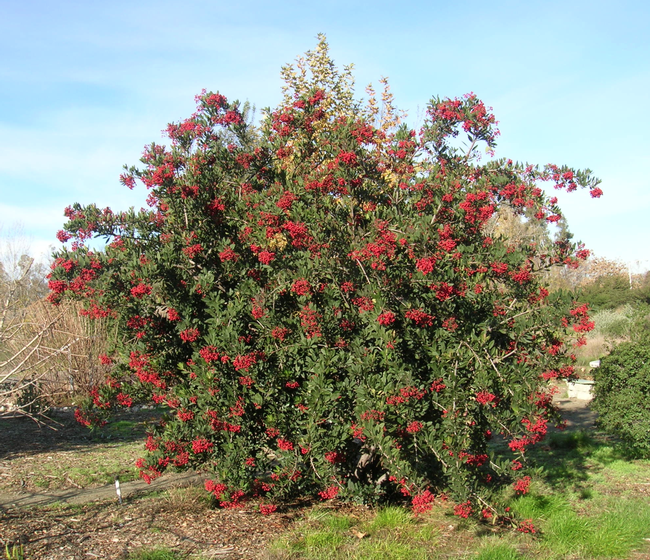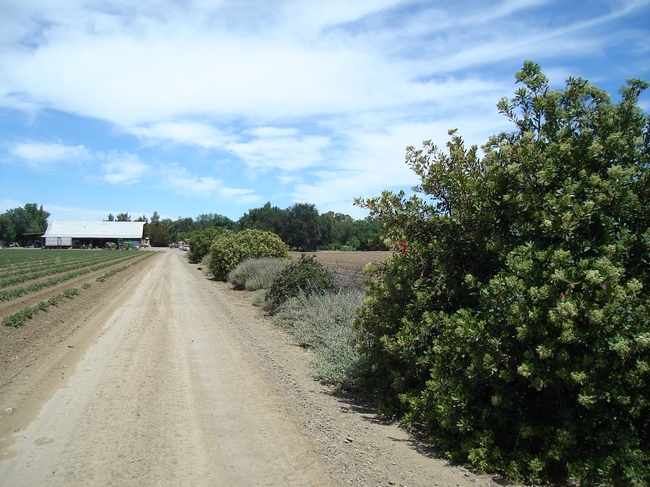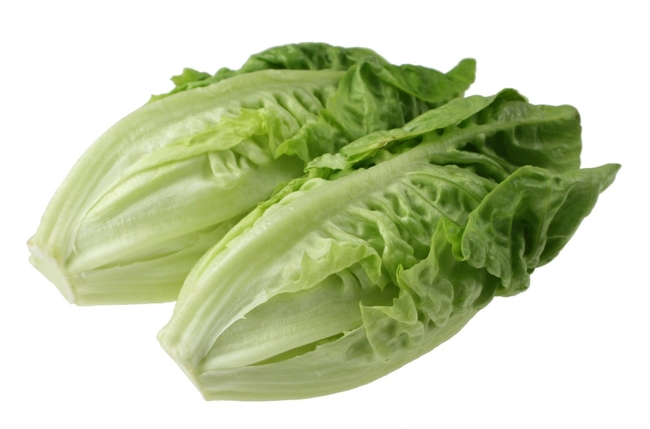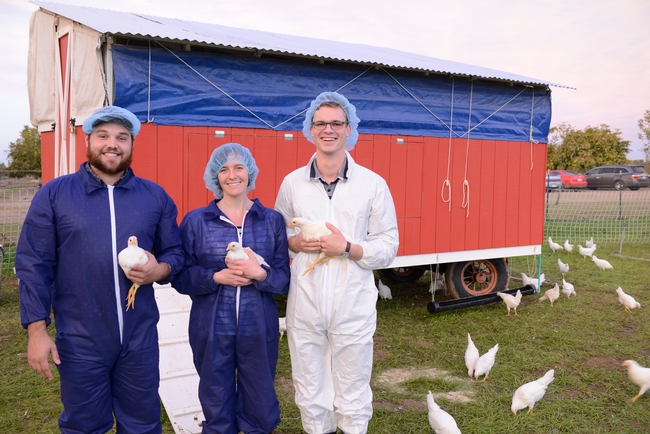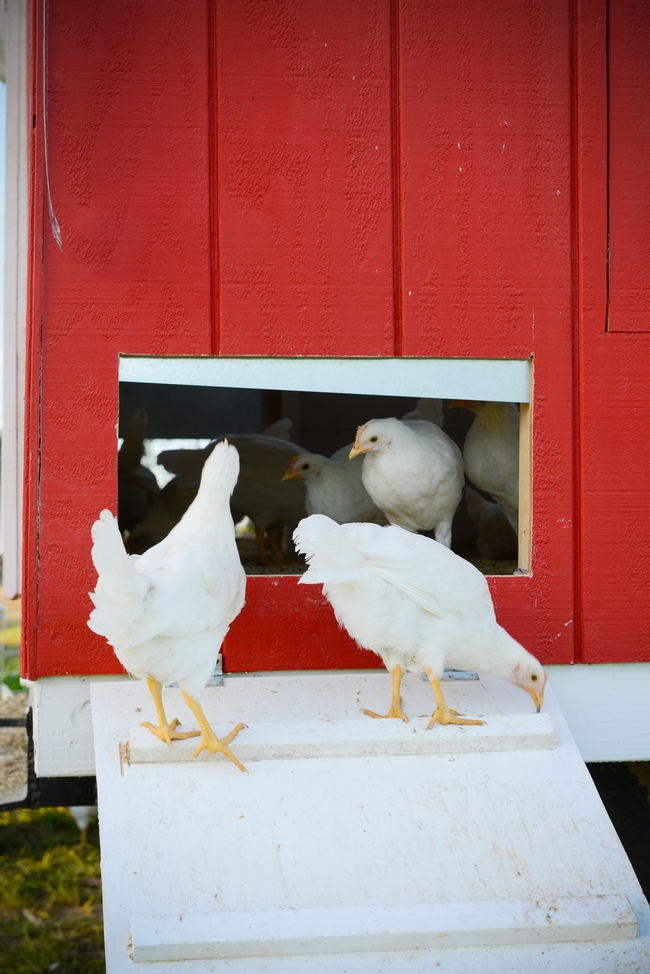Posts Tagged: food safety
July 2018 News Clips
California's Wildfires Are Spreading Faster and Burning More This Year. Experts Say It 'Can Only Get Worse'
(TIME) Jennifer Calfas, July 31
…Rising temperatures aren't the only reason fires have grown in size and aggression, though scientists are quick not to place blame entirely on climate change. Urban development in vulnerable areas can make fires more devastating, and many of the state's most destructive fires were started by humans including the Carr Fire. Max Moritz, a specialist in cooperative extension at the University of California's Division of Agriculture and Natural Resource, says hotter temperatures have made fire seasons longer, too. Scientists see a direct link between rising temperatures and the amount of dry brush and ample fuel, which makes the fires fast-moving and often more explosive.
“There's good, solid research linking temperature increases to trends in fire activity,” says Moritz. “But it's really long-term trends.”
http://time.com/5353986/california-wildfire-2018-season/
Alfalfa & forage research grants awarded
(Morning Ag Clips) July 31
The California Alfalfa and Forage Research Foundation (Foundation), formed in 2015, is pleased to announce that it has awarded its first round of research grants….
Selected projects:
EVALUATION OF WEED MANAGEMENT IN CONVENTIONAL SEEDLING ALFALFA
submitted by Mariano Galla, UCCE Agronomy & Weed Science, Butte and Tehama Counties
EVALUATION OF WEED MANAGEMENT IN ESTABLISHED ALFALFA
submitted by Thomas Getts, UCCE Weed Ecology and Cropping Systems Advisor – Lassen, Modoc, Plumas and Sierra Counties
REDUCING WEED PRESSURE DURING STAND ESTABLISHMENT USING PRE-PLANT WEED GERMINATION FOLLOWED BY MECHANICAL OR CHEMICAL CONTROL
submitted by Sarah Light, UCCE Agronomy Advisor, Sutter, Yuba and Colusa Counties
https://www.morningagclips.com/alfalfa-forage-research-grants-awarded/
Agricultural practices showcased at IREC Field Day in Tulelake
(Siskiyou Daily) Danielle Jester, July 30
An inside look at agricultural research being done at the Intermountain Research and Extension Center in Tulelake was given to those who attended the IREC's Annual Field Day on July 26.
Firefighters Are Focused on Flames, Not Climate Change
(Scientific American) Kelsey Brugger, July 30
Climate change has exacerbated wildfires throughout America, and it's testing the people who fight them.
…Scientists are careful not to attribute any one wildfire to global warming, “but it sure looks like climate change,” said Max Moritz, a wildfire specialist in the Environmental Science, Policy, & Management Department at the University of California, Berkeley.
https://www.scientificamerican.com/article/firefighters-are-focused-on-flames-not-climate-change/
How California copes with Asian citrus psyllids
(Capital Press) Padma Nagappan, July 27
Huanglongbing, also known as citrus greening disease, has devastated the Florida citrus industry, and researchers and growers are working to prevent its spread to California's commercial groves.
…The disease is still confined to residential trees, but is spreading throughout Southern California — in Orange, Los Angeles and Riverside counties.
“That picture could easily change this fall, there's a lag time from when trees are infected and when we can tell that they're infected,” said Elizabeth Grafton Cardwell, an entomologist at the University of California-Riverside and the director of the San Joaquin Valley research center.
http://www.capitalpress.com/Orchards/20180725/how-california-copes-with-asian-citrus-psyllids
Portugal, the government is relying on an ancient firefighting technology: goats
(Christian Science Monitor) July 26
Portugal, the government is relying on an ancient firefighting technology: goats.
Last year deaths from wildfires in Portugal reached a record high of 106. This summer, however, hundreds of goats are being deployed to eat underbrush and dry vegetation that can serve as kindling. Working with goats “allows you to treat areas that are difficult to reach otherwise,” Dan Macon, a University of California Cooperative Extension livestock and natural resources adviser, told accuweather.com.
Phylloxera can also appear on own-rooted vines
(Western Farm Press) Tim Hearden, July 25
A University of California Cooperative Extension farm advisor cautions that even own-rooted vines can be susceptible to grape phylloxera, a tiny aphid-like insect that feeds on roots.
Lynn Wunderlich, a UCCE advisor based at Placerville, says some growers in her area are taken aback by the discovery of phylloxera in their own-rooted vines that are declining. The insect is thought to feed on certain rootstocks, stunting growth of vines or killing them, but it also can affect vines that are not grafted onto rootstock.
https://www.westernfarmpress.com/grapes/phylloxera-can-also-appear-own-rooted-vines
Minimize dust in vineyards for effective weed control
(Western Farm Press) Tim Hearden, July 25
In the hot summer months, activities in vineyards — as well as orchards and other farm fields — can kick up a lot of dust. And aside from causing soil erosion, tissue damage, reduced photosynthesis, and other troubles, wind-blown dust can complicate weed control, a University of California Cooperative Extension advisor says.
That's because dust can reduce the efficacy of glyphosate, which is an important tool for the management of weeds in vines and elsewhere, according to Lynn Sosnoskie, agronomy and weed science advisor based at Merced.
https://www.westernfarmpress.com/grapes/minimize-dust-vineyards-effective-weed-control
Family of mountain lions visits research center in Hopland Monday
(KRCR) Marissa Papanek, July 24
According to the Hopland Research and Extension Center, a family of mountain lions were captured on camera strolling down a Hopland trail Monday.
HREC said via Facebook that it uses trail cameras to understand local wildlife populations and their movement and behavior. Those cameras caught some of the area's largest inhabitants Monday, including adult and young mountain lions.
USDA Awards UC and Karuk Tribe $1.2 Million for Research and Education
(Native America Today) July 24
...Jennifer Sowerwine, UC Cooperative Extension specialist at UC Berkeley and co-founder of the Karuk-UC Berkeley Collaborative, and Lisa Hillman, program manager of the Karuk Tribe's Píkyav Field Institute, will co-lead the xúus nu'éethti – we are caring for it research project.
https://www.nativeamericatoday.com/breaking-news-4
UC advisor Blake Sanden retires after decades of research in almonds and pistachios
(Ceres Imaging) July 24
Blake Sanden, a University of California advisor for almond and pistachio growers since the 1990s, officially retired as of June (for more on Blake's career achievements, see this blog on the UC site).
Could Coffee Be California's Next Cash Crop?
(San Francisco Magazine) Luke Tsai, July 24
The story of California's coffee experiment begins with Jay Ruskey...
In the many online videos you can find of Ruskey, who is 45 years old, he's charismatic and good-looking, with floppy hair, a toothy grin, and a distant resemblance to the actor John Krasinski. He isn't the first person to try to grow coffee in California, but he is the first to preach the gospel convincingly and to make a serious attempt on a commercial scale. It's an effort that stretches back more than 15 years, to when Mark Gaskell, a small-farm adviser with the UC Cooperative Extension program, handed Ruskey nearly 40 Central American coffee plants and helped him figure out how to get them to grow.
https://modernluxury.com/san-francisco/story/could-coffee-be-californias-next-cash-crop
Karuk cultural food and plants to be studied
(Siskiyou Daily News) July 20
The USDA recently awarded a $1.2 million Agriculture and Food Research Initiative grant to UC Berkeley and the Karuk Tribe to increase resilience of cultural food and other plant resources.
According to a press release from UC California's Division of Agriculture and Natural Resources, the university and the Karuk Tribe will “learn more about stewarding native food plants in fluctuating environmental conditions.” All project activities will take place in the Karuk Tribe's Aboriginal Territory in the mid Klamath River Basin.
http://www.siskiyoudaily.com/news/20180720/karuk-cultural-food-and-plants-to-be-studied
High-speed Wi-Fi at ag research center may be blueprint for rural communities
(RCR Wireless News) Susan Rambo, July 20
Outside the small San Joaquin Valley town of Parlier, 20 miles south of Fresno, California, the University of California's Kearney Agricultural Research and Education Center looms over farmland. Much more impressive in person than on Google street view, the center looks like a mini university campus — which is how KARE describes itself. Researchers have studied agriculture in this location since 1965, when local farmers pitched in to buy the land and donate it to the University of California Agriculture and Natural Resources (UC ANR). KARE is one of nine research and extension centers (RECs) under the umbrella of UC ANR around the state, one of which is nearby Lindcove (LREC).
… “I've been in Africa recently and the mobile coverage there was better,” said Dr. Jeffery A. Dahlberg, director of KARE, referring to some rural areas around the center. “It's embarrassing,” he said, given the relative wealth of United States.
Working Landscapes
(KCAA Water Zone) Inge Bisconer, July 19
Glenda Humiston was interviewed on ecosystem services on working landscapes. Humiston is introduced at 12-minute mark, followed by audio tech difficulties. At 16 minutes, Humiston begins talking about the Elevate Rural California project's efforts to encourage biomass development, broadband connectivity and water infrastructure to create more business and jobs opportunities. One activity that Stephanie Larson, UC Cooperative Extension director in Sonoma County, is working on is building markets for ecosystem services such as groundwater recharge, oxygen produced by plants, flood protection, wildlife habitat and open space.
Humiston also encouraged listeners to participate in the California Economic Summit being held in Santa Rosa on Nov. 15-16. She noted that summit participants look for triple bottomline solutions and get things done.
http://podcasts.kcaastreaming.com/water/
This year's almond spurs produce next year's crop
(Ag Alert) Dennis Pollock, July 19
You may not readily see it, but healthy spurs on this year's almond trees set the table for optimizing yields next year. And it could be a mistake to weigh in with a heavy hand when it comes to pruning trees.
Elizabeth Fichtner, University of California Cooperative Extension farm adviser in Tulare County, and Bruce Lampinen, UC walnut specialist with UC Davis, addressed those topics at a Central California Almond Day event in Fresno.
“All buds in the current year were formed the prior summer,” Fichtner said.
http://www.dailydemocrat.com/business/20180719/this-years-almond-spurs-produce-next-years-crop
Extreme heat in the garden: How to keep plants healthy with water, shade and mulch
(LA Daily News) Sandra Barrera, July 19
“In Southern California, Sunset zones are preferred over USDA zones due to their greater accuracy,” said Janet Hartin, an environmental horticulture advisor for the University of California Cooperative Extension in San Bernardino, Riverside and L.A. counties.
Wireless smart farming to keep frost away from citrus
(RCR Wireless News) Susan Rambo, July 17
Computer science researchers from the University of California Santa Barbara are using the internet of things to prove that smart farming can be a farm implement as basic as the tractor and plough.
…Dr. Beth Grafton-Cardwell, research entomologist, an integrated pest management (IPM) specialist and Lindcove's director remembers sorting fruit by hand.
What is meat, anyway? Lab-grown food sets off a debate
(Wired) Matt Simon, July 16
…There could also be a middle ground here: marketing the new product as meat, but qualifying that designation. So “cultured meat,” or “lab-grown meat”—people have even thrown around “cell-based meat” (though technically speaking, all meat is cell-based). You can't, after all, just call your soy milk plain old milk. “Almond milk is obviously not the lactate of a mammary gland,” says animal geneticist Alison Van Eenennaam of UC Davis. “So I think probably there's going to have to be some other distinguisher so it's not mislabeled, because the FDA rules on labeling is it can't be false or misleading.And if it's labeled ‘meat,' you could make an argument that that's misleading.”
https://www.wired.com/story/what-is-meat-anyway
Parasite-borne illness spurs McDonald's to pull salads from 3,000 restaurants
(Los Angeles Times) Geoffrey Mohan, July 13
…“We are seeing more of these outbreaks popping up,” said Erin DiCaprio, a cooperative extension assistant specialist at the UC Davis' Department of Food Science and Technology.
The parasites are specific to humans and tend to spread through poorly processed sewage that may find its way into irrigation sources, DiCaprio said. “It's usually associated with produce that's from outside the United States,” she said.
There is no routine testing for presence of the parasite in the U.S. produce industry, in part because it has been difficult to develop a test in the laboratory, DiCaprio said. Many physicians also overlook testing ill patients for the parasite, according to the CDC.
http://www.latimes.com/business/la-fi-mcdonalds-salads-20180713-story.html
Is It Safe to Eat Local Produce After a Wildfire?
(Pacific Standard) Sophie Yeo, July 13
…But the story could be different for another popular product of small-scale farming: eggs. Another study being undertaken by scientists at the University of California–Davis is examining how the ash distributed by the fires could have affected poultry and the eggs they produce. This group, too, has just received its first batch of data.
"Chickens are unique in that they spend 25 percent of their waking time eating off the ground. It's a worst-case scenario, where they really are products of the environment because they spend so much time ingesting it. Eggs are particularly worrisome because yolks are very fatty, and a lot of these chemicals are very fat soluble," says Maurice Pitesky, a veterinarian and epidemiologist working on the study. "It's a bit of a different risk factor from some produce. I would be very surprised if we didn't find something."
https://psmag.com/environment/is-it-safe-to-eat-local-produce-after-a-wildfire
California Today: Here's What's Been Different About Fires This Year
(New York Times) Thomas Fuller, Matt Stevens, July 13
…Firefighters for decades were accustomed to seeing fires slow down considerably at night, said Scott L. Stephens, a professor of fire science at the University of California, Berkeley. But a number of recent fires have continued to advance rapidly through the night.
“Many times now in the evening fires are burning at night almost as active as they are in the day,” Professor Stephens said. “Things are happening here in California that 10 years ago I never heard about.”
https://www.nytimes.com/2018/07/13/us/california-today-wildfires-emmys.html
Firewise: Wildfire Preparedness Goes Beyond Horse Evacuation
(Paulick Report) Denise Steffanus, July 11
Dr. Kate Wilkin, forest and fire adviser for the University of California Cooperative Extension, said farm owners can take advantage of equine grazing habits — eating grass down to the nub — to protect the safety zone.
“Having heavy grazing around your structures and then feathering it out as you go farther away from the structures is one way to protect the property,” she said. “Of course, you want to be careful not to destroy that forage by overgrazing that will cause erosion.”
SAD story: Sugar disorder causes mid-season grape shrivel
(Western Farm Press) Tim Hearden, July 11
Among the most common headaches that grape growers encounter as their crop is developing is sugar accumulation disorder, or SAD, say University of California advisors.
Field studies involving E & J Gallo Winery and UC researchers have been under way near Clarksburg, Calif., to find solutions for SAD, which causes poor berry coloration and low sugar accumulation. It is triggered after veraison, according to Chuck Ingels of the UC Cooperative Extension in Sacramento County.
http://www.westernfarmpress.com/grapes/sad-story-sugar-disorder-causes-mid-season-grape-shrivel
Amid trade turmoil, olive industry eyes U.S. market
(Western Farm Press) Tim Hearden, July 11
…As the state's tree nut sectors are advocating vociferously for a resolution to the budding trade war with China, the European Union and other countries, one crop that is largely unscathed by all the turmoil is olives.
That's because unlike most Golden State commodities, olive exports are minimal while import competition is robust, University of California-Davis agricultural economist Daniel Sumner notes.
“Olives are in a different situation,” Sumner said during a recent grower meeting in Orland, Calif. “The big difference for olives is they're not an export crop for the United States.”
http://www.westernfarmpress.com/orchard-crops/amid-trade-turmoil-olive-industry-eyes-us-market
Effects of China's tariffs on California agriculture
(KPFA) UpFront, July 9
Beginning at the 50:00 mark, Daniel Sumner discusses the effects of China's tariffs on California agriculture.
It doesn't need to escalate to take a hit. You have the direct hits of what's happening now, you also have the threat of future things happening. As you know, business including agriculture operates on expectations. I would say the biggest thing listeners should keep in mind is that as much as we focus on the announcement of the day, the announcement of tariffs on Chinese goods and the Chinese long-planned retaliation, those lists were put together months ago. Businesses were hoping it wouldn't happen, but planning for that.
https://kpfa.org/player/?audio=289782
7 Smart Irrigation Watering Tips
(My Motherlode) Rebecca Miller-Cripps, UCCE Master Gardener
We have been lucky, in terms of water, in Tuolumne County in 2018. Late snow and rain in March and April helped offset a dry early winter and temperatures have remained fairly mild so far this summer.
…Celebrate “Smart Irrigation Month” by using some of the watering tips from the University of California Integrated Pest Management program,http://ipm.ucanr.edu/TOOLS/TURF/ …
https://www.mymotherlode.com/news/local/375518/7-smart-irrigation-watering-tips.html
The Spoon @ FOOD IT: Gabe Youtsey of UCANR, July 7
The Spoon partnered with the Mixing Bowl to interview some of the thought leaders at the FOOD IT event. This interview is with Gabe Youtsey, Chief Innovation Officer of the University of California, Agriculture and Natural Resources (UCANR).
https://vimeo.com/album/5290019/video/278781519
Central Valley farmers brace for fallout from tariffs
(Bakersfield Californian) John Cox, July 7
Dan Sumner, an agricultural economist at UC Davis, sees trouble on many fronts. Whenever farmers install vineyard trellises or irrigation piping, he said, they're being hit by price increases resulting from new U.S. tariffs on imported steel.
5 reasons California jobs are vulnerable to the China tariffs
(ABC 10) Eric Escalante, July 6
…In contrast, UC Davis Agricultural and Resource Economics Professor Daniel Sumner reasons that most jobs in farming are low wage and many others are seasonal.
“Farm employment may fall slightly, but the crops are in the ground and being harvested so for this year labor impacts are smaller,” said Sumner in an email. “The longer it lasts it will begin to have significant impacts as economic growth is reduced. But farm employment effects overall will be moderate at most.”
Five UC Cooperative Extension advisors retired on June 28
(Fruit Growers News) July 4
At the end of June, the distinguished careers of five UC Cooperative Extension advisors concluded when they retired. The new retirees are:
Mark Gaskell, UCCE small farms advisor for San Luis Obispo and Santa Barbara county
Gene Miyao, UCCE vegetable crops advisor for Yolo, Solano and Sacramento counties
Kim Rodrigues, director of the Hopland Research & Extension Center and UCCE forest advisor
Black Sanden, UCCE irrigation, soils and agronomy advisor in Kern County
Steve Tjosvold, UCCE horticulture advisor for Santa Cruz and Monterey counties
https://fruitgrowersnews.com/news/five-uc-cooperative-extension-advisors-retired-on-june-28/
Pruning wounds can lead to cankers, UC specialist warns
(Western Farm Press) Dennis Pollock, July 3
To paraphrase Shakespeare, almond pruning can be the unkindest cuts of all. They can open the way to a range of almond canker damage, says Florent Trouillas, assistant University of California Cooperative Extension specialist at the Kearney Agricultural Research and Extension Center.
http://www.westernfarmpress.com/tree-nuts/pruning-wounds-can-lead-cankers-uc-specialist-warns
Wildfires are burning across the country—here's how to prepare
(Popular Science) Mary Beth Griggs, July 3
…“Know that under conditions of mandatory evacuation, you will encounter traffic, frightening conditions, highly limited visibility due to smoke, etc., so being ready and leaving early is really important,” says Sabrina Drill, the Natural Resources Advisor for UC Cooperative Extension in Los Angeles and Ventura Counties. Cooperative extensions are a great place to get local information about how to prepare for wildfires in your particular area of the country.
https://www.popsci.com/wildfire-what-to-do
Five things you probably never knew about California's wildfires
(Mercury News) Patrick May, July 3
…Travis Bean writes in UC Weed Science blog that despite all the news coverage of last year's wildfires, “almost no source has identified the actual fuels involved for this most recent fire season or any other. As a weed scientist, this is a particularly alarming omission, especially when it's highly likely that invasive plants may have been partially responsible for exacerbating the intensity and spatial scale of many, if not most, of 2017's fires.”
Good news for hedgerows: No effects on food safety in the field
Hedgerows enhance wildlife abundance and diversity around farmland without contributing to food safety problems in field crops, according to a new study published by a team of University of California researchers. The UC Agriculture and Natural Resources and UC Davis study documented that field edge plantings around farms are generally too narrow relative to the surrounding landscape to be a source of rodents and foodborne pathogens.
“This study is particularly pertinent right now when FDA's Food Safety Modernization Act (FSMA) is calling for farmers to co-manage wildlife and agriculture, instead of clear cutting wild habitat around their crops,” said co-author Rachael Long, UC Cooperative Extension farm advisor in the Sacramento Valley. “Our paper provides support for this ruling, showing that the presence of hedgerows does increase wildlife diversity, but does not increase wildlife intrusion into the fields and, more importantly, does not increase the prevalence of animals carrying foodborne pathogens.”
This is good news for hedgerows, rows of shrubs, trees, grasses and flowers that are planted on field edges. The plants bordering crop fields provide habitat and floral resources for beneficial insects, such as bees and natural enemies, that help with pollination and biocontrol of pests in adjacent crops. Hedgerows also help enhance biodiversity – especially for insect-eating birds – help reduce wind and soil erosion, and protect water quality.
The two-year study in Sacramento Valley walnut orchards and processing tomato fields was led by Long and Roger Baldwin, UC Cooperative Extension vertebrate pest control specialist at UC Davis, former graduate student Laurel Sellers, the Western Center for Food Safety at UC Davis's Michele Jay-Russell, Xunde Lib and Edward R. Atwill, and Richard M. Engeman of USDA National Wildlife Research Center.
The study, titled “Impact of field-edge habitat on mammalian wildlife abundance, distribution, and vectored foodborne pathogens in adjacent crops,” was published in the February 2018 Crop Protection (Sellers et al. 2018).
Elsevier is providing 50 days of free access to this article. Anyone clicking on the following link before March 31, 2018, will be taken directly to the article on ScienceDirect. No signup or registration or fees are required. Simply click and read at https://authors.elsevier.com/c/1WXU~xPFYej~4.
This journal article supports a growing body of literature suggesting that plantings along the edge of fields do not substantially attract wildlife species that intrude on fields and transfer foodborne pathogens. For example, in a 2015 study, UC Davis researchers found more food pathogens when wildlife habitat was reduced on farms. This may be attributed to the vegetation filtering pathogens, a better breakdown of pathogens in diverse environments, and that removing vegetation may not deter wildlife from entering farm fields.
Relative to the larger crop acreage, hedgerows and similar field-edge habitats are generally too linear and small to serve as a significant source of rodents to damage nearby crops. However, cottontail rabbits favor hedgerows, and can sometimes cause damage to adjacent seedling crops.
“Overall, we found risk of crop loss or contamination of foodborne pathogens in crops bordered by hedgerows wasn't significant in our study in the Sacramento Valley, although potential damage could vary by the stage and type of crop and wildlife species present,” Long said. She will be presenting this work at the 28th Vertebrate Pest Control Conference, which will be held in Rohnert Park Feb. 26 to March 1.
In its Standards for the Growing, Harvesting, Packing, and Holding of Produce for Human Consumption, the U.S. Food and Drug Administration says, "We continue to encourage the co-management of food safety, conservation, and environmental protection.”
Further reading:
Hedgerow benefits align with food production and sustainability goals. http://calag.ucanr.edu/archive/?article=ca.2017a0020
Comanaging fresh produce for nature conservation and food safety. http://www.pnas.org/content/112/35/11126
X
No need to pass on the Caesar's salad
At least 58 people have been sickened, and two — one in California and one in Canada — have died because they contracted E. coli O157:H7 in November and December, believed to be related to eating romaine lettuce or other leafy greens. In the United States, the U.S. Centers for Disease Control has linked at least 17 reports of illness in 13 states to the outbreak.
That has many people passing on Caesar's salad. But UC Cooperative Extension specialist Trevor Suslow said it is unlikely that romaine now at grocery stores is contaminated, reported Bob Rodriguez in the Fresno Bee.
"It's not going to last that long, it's gone," Suslow said.
The CDC is conducting whole genome sequencing on samples of bacteria making people sick in the U.S. and Canada to determine whether they are related. Preliminary results show the type of E. coli is closely related genetically, the CDC reported.
Food safety technology has improved in leaps and generations
Food safety technology has improved significantly in recent years as molecular microbiology, electronic data sharing and analysis of matching genetic relatedness has advanced, reported Samantha Masunaga in the Los Angeles Times. The comments are from UC Agriculture and Natural Resources Cooperative Extension specialist Trevor Suslow, who is featured in a Q&A about the food safety problems suffered by the fast-casual restaurant chain Chipotle Mexican Grill.
"We've got a long way to go still to make the level of compliance more uniform, better, cheaper, and some of it is simply lack of science and lack of knowledge about the specific link between practices, pathogen biology, exposure," Suslow said.
He believes the food at Chipotle is not necessarily safer now that changes have been made at the popular restaurants.
"I know from personal contact that many similar fast-casual and fast-food restaurants are reassessing their internal operations and their supply chain management," Suslow said. "I guess we'll wait and see how their consumer base responds if they implement the practices of trying to do treatments that change the fresh nature of their components that might not normally be cooked."
Pastured poultry farm to foster innovation for small chicken farms
UC Agriculture and Natural Resources (UC ANR) provided seed money to launch a new Pastured Poultry Farm at UC Davis. The farm is home to 150 young chickens and a living laboratory where students and faculty researchers hope to develop innovative solutions benefiting pasture-based farms, integrative crop-and-poultry farms and backyard flocks.
Pasture-based chicken production offers many benefits as well as some challenges in terms of food safety, animal health and welfare, and environmental impacts, said Maurice Pitesky, UC ANR Cooperative Extension poultry specialist with the School of Veterinary Medicine and co-leader of the poultry project.
The new 4.5-acre farm, located about one mile west of the central UC Davis campus, includes a seeded, irrigated pasture, where the chickens can forage. In the center is a bright red student-built Eggmobile for night time housing. The ‘coop on wheels' can be strategically moved around the land for consistent fertilization. The pasture uses a portable electronic fence to protect against predators and is surrounded by a 50-foot band of uncultivated land to serve as a wildlife buffer.
“This is a unique innovation, research and outreach resource for the Western United States,” Pitesky said. “The project includes faculty and students with expertise in veterinary medicine, husbandry, welfare, pasture management and engineering, which allows us to address issues related to predator control, welfare, food safety and food efficiency.”
Debbie Niemeier, professor in the Department of Civil and Environmental Engineering, and her team have already developed a number of innovations for the project, including a tarp-pulley system, portable-shade and predator-mitigation structures, an automatic watering system, and modular roll-out nest boxes.
One of the advantages of the pasture-based system is the opportunity for a farmer to integrate chicken production with a farm's existing cropping system, with the chickens providing natural fertilizer for the crops.
“It's also a way for crop farmers to move into poultry production without expanding their land or adding nitrogen fertilizer to their farming system,” Pitesky said.
The new project is largely driven by students - drawn from the School of Veterinary Medicine, College of Engineering, and College of Agricultural and Environmental Sciences - who designed and constructed the Eggmobile. The mobile barn includes 32 nest boxes, each capable of accommodating several chickens. As it is moved to different locations in the pasture, chicken droppings gradually fertilize the grass. The student and faculty research teams will be delving into issues involving diseases and chicken health, predation by wildlife, and occupational health for workers.
Eggs produced by the project's flock will initially be donated to food shelters. The potential for eventual egg sales to the community is being explored. Eventually, the research team hopes to construct multiple Eggmobiles with different designs, and in time would like to expand the project to include broiler chickens, as well as cropping systems that integrate poultry, in order to fully maximize the potential of the land for food production.
A list of donors and other information about the UC Davis Pastured Poultry Farm can be found online. The School of Veterinary Medicine has established an online site where individuals interesting in supporting the UC Davis Pastured Poultry Farm financially can make donations.
Author: Patricia Bailey


